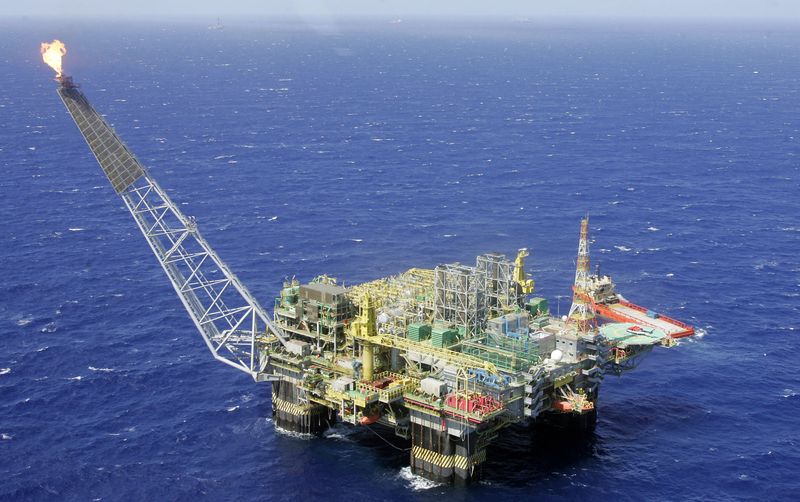By Sabrina Valle
HOUSTON (Reuters) – Technological advances are allowing U.S. shale oil and gas companies to reverse years of productivity declines, but the associated requirement to bring forward costs by drilling many more wells is keeping some companies from doing so.
While overall production is at record levels, the amount of oil drilled per foot in Texas’ Permian Basin, the main U.S. shale formation, fell 15% between 2020 and 2023, matching levels seen a decade ago, energy researcher said. Enverus.
That’s because fracking, the extraction method that emerged in the mid-2000s, has become less efficient there. This technique involves injecting water, sand and chemicals underground at high pressure to release the trapped resources.
Two decades of drilling wells relatively close together, resulting in hundreds of thousands of wells, have disrupted underground pressure and made it more difficult to extract oil from the ground.
“The pits are getting worse and that will continue,” said Dane Gregoris, director of Enverus Intelligence Research.
But new oilfield innovations, implemented on a larger scale last year, have made fracking possible faster, cheaper and with higher yields.
Advances in recent years include the ability to double the length of lateral wells to five kilometers and equipment that can frack two or three wells simultaneously. Electric pumps can replace expensive diesel equipment that requires a lot of maintenance.
“Companies can now complete (frack) wells faster and cheaper,” said Betty Jiang, an oil analyst at Barclays.
Remove ads
.
One disadvantage of the new simultaneous fracking technology, also called simultaneous fracking, is that companies must have many wells drilled and be ready to move to the fracking phase together before they can move forward. Pumps inject fluids and extract oil and gas from two or three wells simultaneously, instead of just one.
Because these act as an interconnected system, wells cannot be added piecemeal. But companies eager to cut costs have not deployed enough drilling rigs to fully realize the potential of the innovations.
“Instead of drilling the wells and getting production going in a few months, you have to drill eight wells, or 10 wells,” said Mike Oestmann, CEO of Tall City Exploration.
“That’s $100 million in the ground before you see any revenue,” he said. “That is a big challenge for small companies like Tall City.”
The number of active oil rigs in the US fell by almost 18% this month from a year ago.
Simul-fracking could also reduce the cost of the wells by between $200,000 and $400,000, or 5%-10% each, estimates Thomas Jacob, senior vice president of supply chain at researcher Rystad Energy.
NEW TECH SUPPORTS RECORD PRODUCTION
Oil analysts expect the use of the new technology to accelerate. “We saw a trend in the second half of last year of companies moving to simul-fracs, and that trend will only continue,” said Saeed Ali Muneeb of energy analytics firm Kayrros.
Longer wells and advances in fracking techniques more than offset declining productivity and limited drilling rig numbers, allowing the U.S. to reach record oil production volumes.
Remove ads
.
The top U.S. shale-producing regions are expected to reach their highest output in five months next month, with production from new wells rising 28% from a year ago, according to the U.S. Energy Information Administration.
“Companies are refining and getting better at fracking,” says Oestmann. “Without them, production would drop.”
Innovations will gain traction once top producers like it ExxonMobil Corp (NYSE:) and Chevron Corp (NYSE:) is adopting them more broadly, shale experts say.
Mid-sized shale companies like Natural resources pioneer (NYSE:) who can afford the costs were the first to embrace the new methods. The positive results make them more attractive to major companies like Exxon, which is awaiting regulatory approval to buy Pioneer.
But the biggest shale producers have pledged to use oil revenues to fund shareholder returns rather than drilling expansions. Two of the largest shale oil operators, Exxon and Chevron, have missed Permian production targets in recent years.
Exxon said its own new fracking technology will allow it to extract an additional 700,000 barrels of oil equivalent per day (boepd) from Pioneer’s assets by 2027, tripling production there to 2 million boepd.
Chevron is increasingly using simul-fracs and says the technique will help increase Permian production by 10% this year to 900,000 boepd. It has also completed a triple-frac pilot and expects to use it more widely, a spokesperson said.


